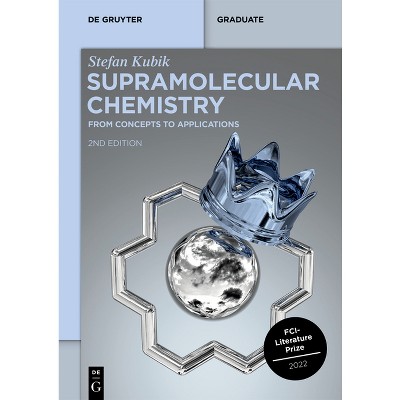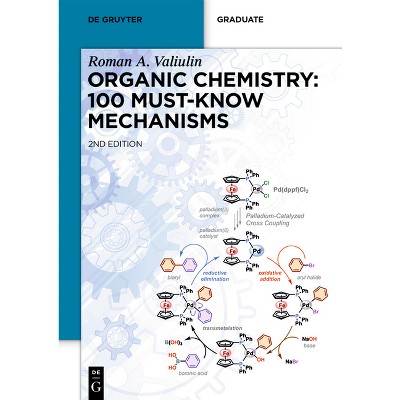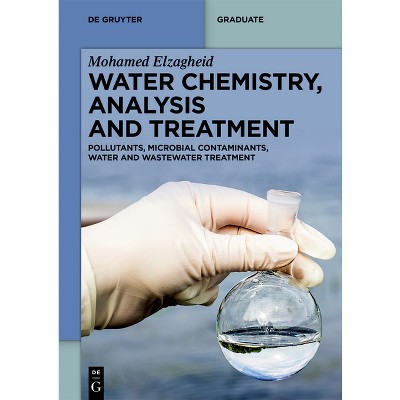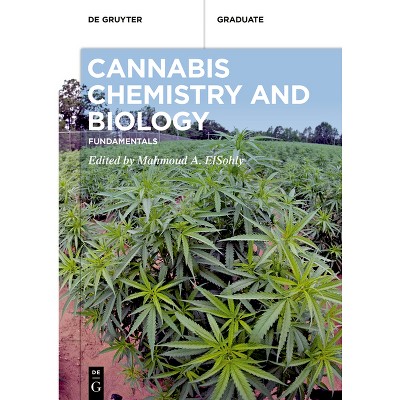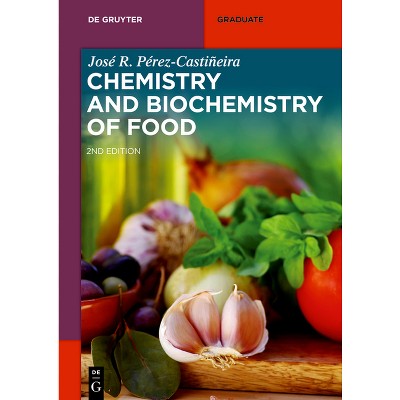Sponsored

Separation Techniques in Analytical Chemistry - (De Gruyter Textbook) by Rudolf Bock & Reinhard Nießner (Paperback)
In Stock
Sponsored
About this item
Highlights
- The separation of a mixture into its individual components is one of the most fundamental procedures in analytical and industrial chemistry.
- About the Author: Reinhold Nießner, Institute of Hydrochemistry/ Chair of Analytical Chemistry, Technical University of Munich.
- 424 Pages
- Science, Chemistry
- Series Name: de Gruyter Textbook
Description
About the Book
84104105115329910897115115105993298111111107321051103297110971081211161059932991041011091051151161141213211211411111810510010111532973299111109112114101104101110115105118101329711010032115121115116101109971161059932111117116108105110101321111023297Book Synopsis
The separation of a mixture into its individual components is one of the most fundamental procedures in analytical and industrial chemistry. This classic book in analytical chemistry provides a comprehensive yet systematic outline of all known separation methods. Through its detailed treatment of the basic principles of separation possibilities, it not only covers what is currently known, but also represents a treasure trove of methods that are still awaiting further development. It is clearly structured and contains interesting examples, further reading and a detailed index. An indispensable book for advanced students of natural sciences (chemistry, biochemistry, food chemistry, pharmacy, clinical chemistry, environmental sciences) and technology (chemical engineering, chemical-physical measurement & biotechnology), as well as teachers of these disciplines.
Review Quotes
From Reviews of the German Edition:
"Subject: This textbook summarizes separation methods in analytical and technical chemistry. The first edition of this book by Prof. Bock was published in 1974. This new version has been revised by Prof. Nießner and supplemented by the analytical achievements of the last 40 years. Furthermore, the classical, systematic classification of separation methods of the original work is retained. The book provides a detailed overview of the separation of individual components from sometimes complex mixtures. The intended readership should be found primarily in advanced students of science and chemical engineering, as well as in teachers of these disciplines.
Contents: The book contains 23 chapters and is structured in three parts. After the introduction in the first part, the second deals with separations due to different distribution between two immiscible phases, and Part III deals with separations due to different migration rates in one phase.
In the specific part of the textbook, separation processes are evaluated (Chapter 1) and classified (Chapter 2). Chemical reactions in separations (Chapter 3), analytical applications of incomplete separations (Chapter 4), and in overview of concentration data (Chapter 5) round out the introduction. Part II includes an extensive introduction (Chapter 6), partitioning between two liquids (e.g., partition chromatography, Chapter 7), solubility of gases in liquids (including a subchapter on gas chromatography, Chapter 8), adsorption and absorption of gases on solids (Chapter 9), adsorption of solutes on solids (e.g. e.g., thin-layer chromatography, Chapter 10), ion exchange (Chapter 11), precipitation methods (Chapter 12), extraction and phase analysis (Chapter 13), crystallization (Chapter 14), distillation (Chapter 15), sublimation (Chapter 16), and condensation (Chapter 17). In Part III, after a brief introduction (Chapter 18), mass spectrometry (Chapter 19), electrophoresis (Chapter 20), diffusion (Chapter 21), sedimentation (Chapter 22), and crossed force field separation of particles (Chapter 23) are described. Each chapter of separation techniques begins with the historical development, definitions as well as theory and ends with a list of literature used or further reading.
Critical review: The systematic classification of all described separation techniques according to distribution between two phases or separation by different migration velocities may seem unusual at first, but turns out to be a highly effective way of structuring a textbook. On the one hand, the reader can expect a reference work, and on the other hand, a textbook on separation processes. Thus, a detailed summary of separation processes in use today, as well as those that have been superseded in the meantime, is provided. On the back cover of the book, it is appropriately described as a "treasure trove of methods" "which are still awaiting further development". The authors deliberately do not evaluate any of these methods, which is why a certain amount of prior knowledge is already required, although mainly basic principles are taught. However, the lack of advantages and disadvantages of the respective methods is disadvantageous especially for readers with less previous knowledge.
The reader should by no means expect a textbook that focuses only on modern methods. For example, application examples are completely missing. The attempt to bring a 40 year old textbook up to date does not always work in detail, but very well in general, which makes the book quite exciting for the interested reader. The chapter on mass spectrometry, for example, is well done, as it also explains new techniques, while capillary electrophoresis, UHPLC or detectors in LC are (almost) not mentioned in the book. Numerous well-done and schematic illustrations complement the book and explain the subject matter very clearly. While the theory is thereby didactically prepared, on the other hand, somewhat more detailed graphics on the devices, apparatus or setups are missing.
Summary: Separation Methods in Analytical Chemistry provides a systematic, albeit non-judgmental, introduction to separation methods that are of great importance to analytical chemistry and process engineering. Most enjoyable will be advanced readers who are already familiar with some separation methods."
Franz Berthiller, Rudolf Krska, Universität für Bodenkultur Wien, Department für Agrarbiotechnologie (IFA-Tulln), Analytikzentrum, Konrad-Lorenz-Str. 20, 3430 Tulln, Austria, e-mail: rudolf.krska@boku.ac.at
About the Author
Reinhold Nießner, Institute of Hydrochemistry/ Chair of Analytical Chemistry, Technical University of Munich. Co-editor of the ACS journal "Analytical Chemistry". Author of nearly 500 scientific publications. Awards: Emanuel Merck Prize for Analytical Chemistry (1990), Smoluchowski Prize for Aerosol Research of the Society for Aerosol Research (1991), Fritz Pregl Medal of the Austrian Society for Analytical Chemistry (1996), Fresenius Prize for Analytical Chemistry of the Society of German Chemists (2000).
Shipping details
Return details
Trending Non-Fiction






